Have you ever wondered about unusual animal mating behaviors from around the globe? Reproduction in the animal kingdom isn’t always straightforward. It can frequently be intricate and argumentative. Much of it involves meticulous planning to single out a suitable partner and then convince her to mate. There are high levels of competition as well. To finally win a mate, many males often find themselves in fierce battles with their competitors. Nevertheless, there are times when animal mating customs display romantic behaviors resembling human courting. One thing is for sure, it is a fascinating world, with millions of animal species working to ensure their survival by passing on their genes to the next generations. Take a look at these 25 Odd Animal Mating Rituals.

Banana Slugs
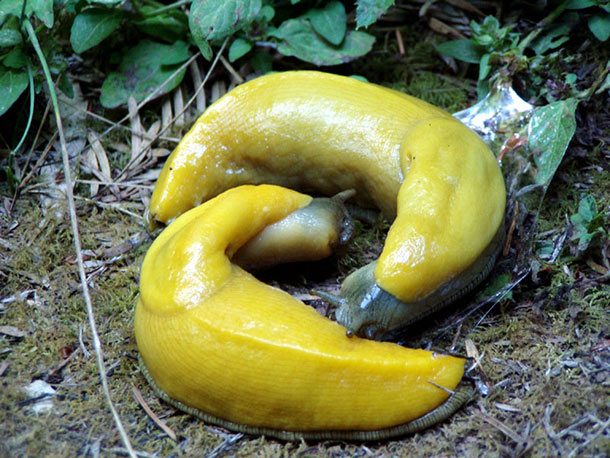 Source: http://kennethadair.org/banana.htm
Source: http://kennethadair.org/banana.htm These slimy yellow creatures are hermaphrodites, meaning they have both male and female reproductive organs, and will both have a reciprocal exchange of sperm. When they mate, they strike at each other like a snake and might even bite into each other’s flesh. It takes hours for them to get into position and even longer for them to finish mating. Sometimes, they might get stuck attached to one another. If they can’t detach, they’ll take turns gnawing off their genitalia and will become female only.
Honeybees
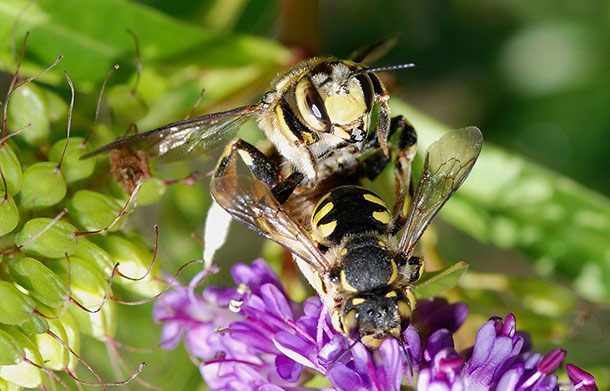 Source: https://www.orkin.com/stinging-pests/bees/mechanics-of-honey-bee-mating/
Source: https://www.orkin.com/stinging-pests/bees/mechanics-of-honey-bee-mating/ These buzzing insects have one queen that only mates once in its lifetime. During its single mating ritual, it flies out into the open until a drone mounts the queen in mid-air and inserts his endophallus. More male honeybees will mount the queen afterward. When a male honeybee is finished, his endophallus is ripped from his body and usually, his abdomen rips open as well, killing the bee. If the male honeybee somehow survives the mating ritual, he’ll be ejected from the nest as he has served his purpose.
Brown Antechinus
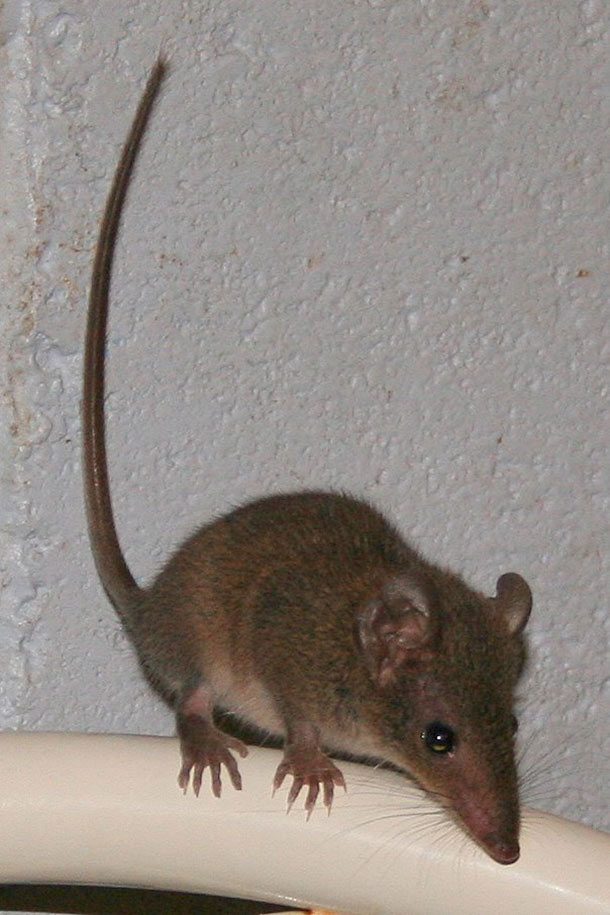 Source: http://phenomena.nationalgeographic.com/2013/10/07/why-a-little-mammal-has-so-much-sex-that-it-disintegrates/
Source: http://phenomena.nationalgeographic.com/2013/10/07/why-a-little-mammal-has-so-much-sex-that-it-disintegrates/ Native to Australia, this little male rodent practically commits suicide by reproducing. After preparing to mate, he frantically tries to mate with every female he can during a 3 to 4-week time-period. The mating itself can last up to 14 hours. The male becomes so exhausted during this process that his hair falls off, he bleeds internally, and his immune system shuts down. When it’s all over, he and every other male are dead.
Bonobos
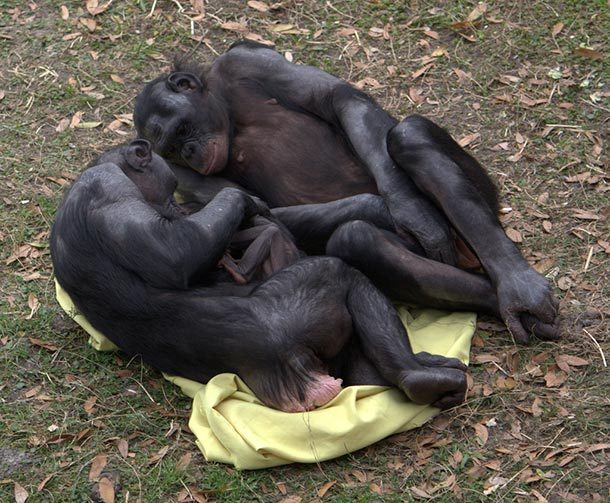 Source: http://discovermagazine.com/1992/jun/13-whatslovegottodo56
Source: http://discovermagazine.com/1992/jun/13-whatslovegottodo56 A close relative to humans, these primates are known to be rather promiscuous, copulating with multiple partners and treating mating as a pleasurable activity, separating it from reproduction only. Also, unlike many other animals, Bonobos prefer copulating face to face.
Flatworm
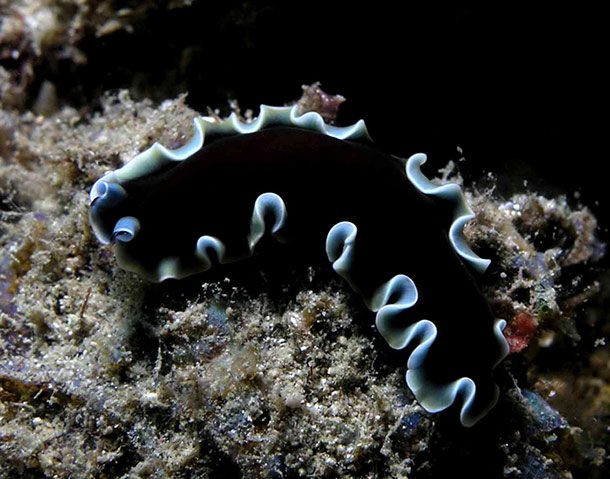 Source: http://www.iflscience.com/plants-and-animals/flatworm-mating-literally-cockblock/
Source: http://www.iflscience.com/plants-and-animals/flatworm-mating-literally-cockblock/ Much like Banana Snails, these wriggling creatures of the sea are hermaphrodites, but they have to choose who will be male and female during mating. How do they make this choice? They literally have a competition to see who can stab the other first. This process can last up to an hour.
Giraffes
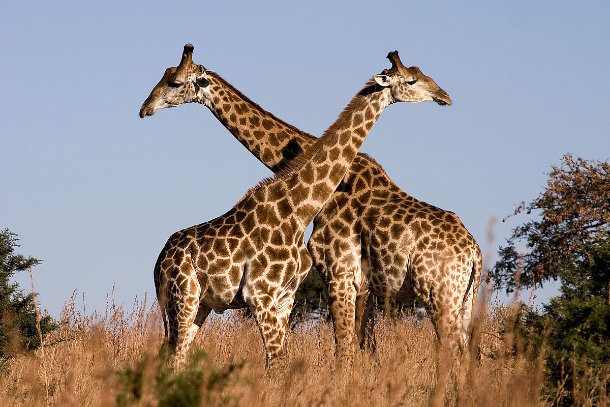 Source: http://www.todayifoundout.com/index.php/2012/07/before-mating-the-female-giraffe-will-first-urinate-in-the-males-mouth/
Source: http://www.todayifoundout.com/index.php/2012/07/before-mating-the-female-giraffe-will-first-urinate-in-the-males-mouth/ These long-necked vegetarians first initiate a mating ritual by something called “Flehmen sequence.” It’s when the male rubs against a female’s backside until she pees. The male will then taste the pee to see if she’s in heat. If she is, he’ll virtually stalk her until he can mate with her, which involves intense fighting between necks. On some occasions, males will also copulate with each other.
Snails
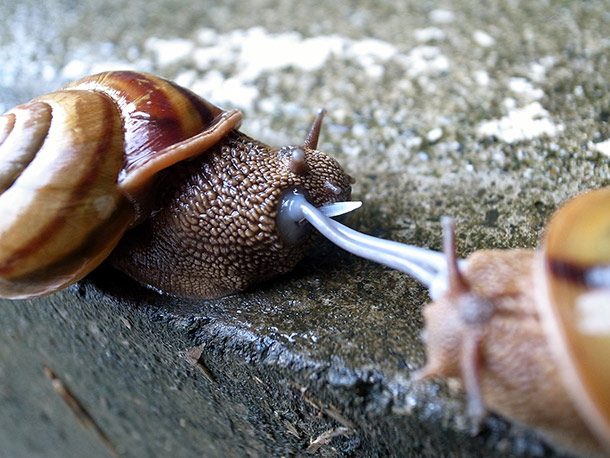 Source: https://www.snail-world.com/how-do-snails-reproduce/, https://news.nationalgeographic.com/2015/03/150310-snails-reproduction-sex-animals-science-evolution/
Source: https://www.snail-world.com/how-do-snails-reproduce/, https://news.nationalgeographic.com/2015/03/150310-snails-reproduction-sex-animals-science-evolution/ These mollusks find each other using a sense of smell and touch. Like some other creatures, they’re hermaphrodites. Once they discover a mate, they use their “love darts” to increase the rate of success of reproducing. These darts can prove rather dangerous if injected in the wrong place, potentially hitting a vital organ instead and killing the mate.
Nursery Web Spiders
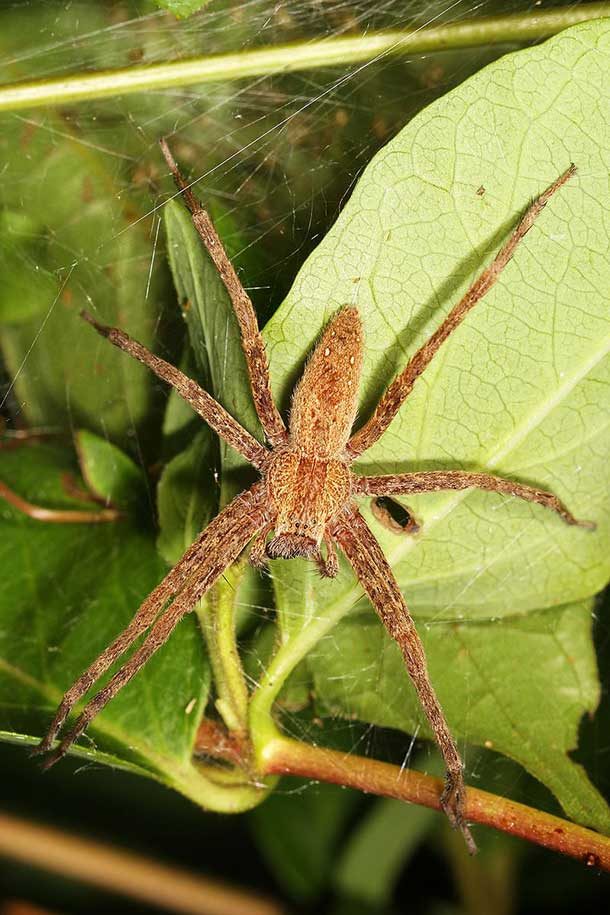 Source: https://phys.org/news/2016-05-nursery-web-spiders-gift-potential.html
Source: https://phys.org/news/2016-05-nursery-web-spiders-gift-potential.html These long-legged arachnids are the gift-giving type. When finding a female, the male will provide a gift of a carcass wrapped in silk before copulating. Scientists believe it’s less a way to woo the female, but rather to avoid being cannibalized.
Prairie Voles
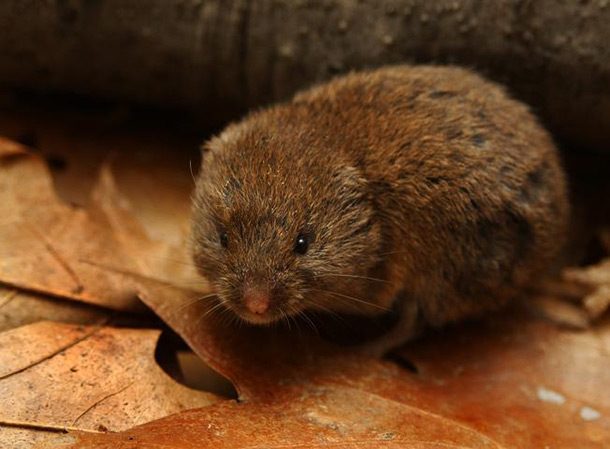 Source: https://www.nature.com/news/gene-switches-make-prairie-voles-fall-in-love-1.13112
Source: https://www.nature.com/news/gene-switches-make-prairie-voles-fall-in-love-1.13112 In major contrast to many other animal mating habits, these little rodents show monogamous behavior. Scientists discovered that when prairie voles mate once, a chemical switches a gene in their brain that causes them to mate together for life, even sharing the same space, nest building, and paternal roles.
Cichlid Fish
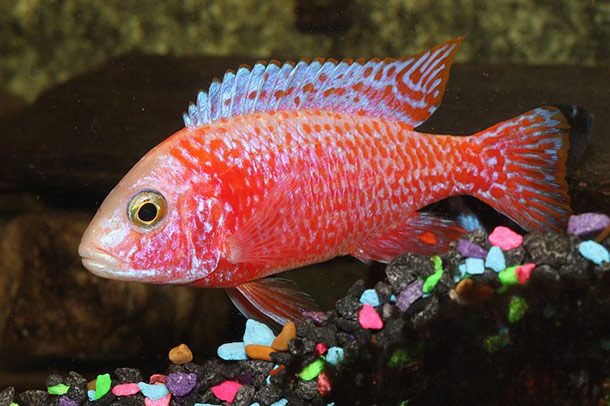 Source: http://www.mit.edu/~lxs/cichlids/breeding.html
Source: http://www.mit.edu/~lxs/cichlids/breeding.html These fish have a strict hierarchy where only the alpha male procreates. The other males hang out in the alpha’s territory, feeding when they can, and have such a suppressed reproductive system they virtually pass as females. When the alpha disappears, another male can quickly take his place, practically rebooting his reproductive system. The male will build a nest and lure a female into it by shaking his tail. She lays her eggs in the nest and he fertilizes them.
Red-Sided Garter Snake
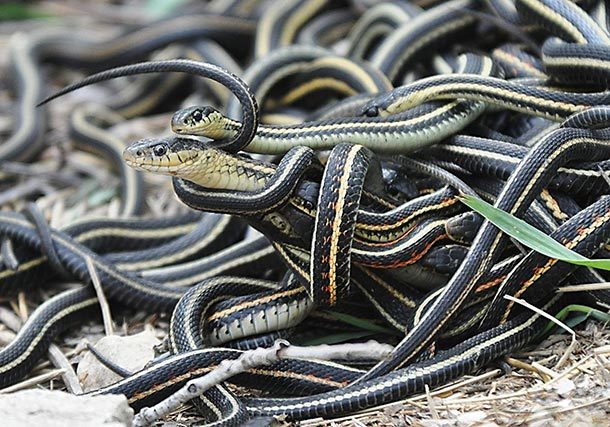 Source: http://www.cbc.ca/wildcanada/from-the-app/red-sided-garter-snakes
Source: http://www.cbc.ca/wildcanada/from-the-app/red-sided-garter-snakes In Narcisse, Manitoba, these slithering reptiles come out of their lairs to mate every year in one giant orgy. The males come out first, waiting for the females. When a larger female approaches, the males will create a giant ball, often outnumbering the female by up to one hundred males.
Spotted Hyena
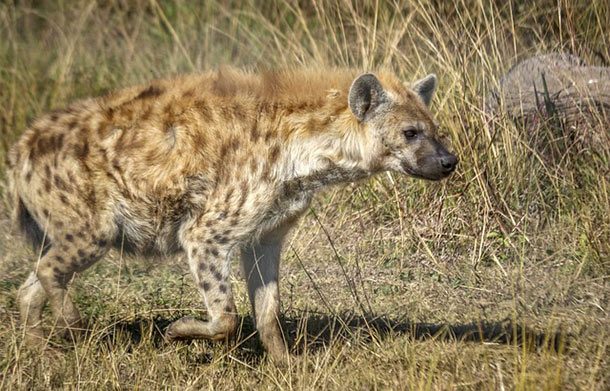 Source: http://www.bbc.com/earth/story/20141028-the-truth-about-spotted-hyenas
Source: http://www.bbc.com/earth/story/20141028-the-truth-about-spotted-hyenas This laughing beast of Africa has a strong hierarchy tradition with females being both aggressive and the leaders in the pack. But, even more unusual, the females have an elongated clitoris that they urinate, copulate, and give birth with.
Birds of Paradise
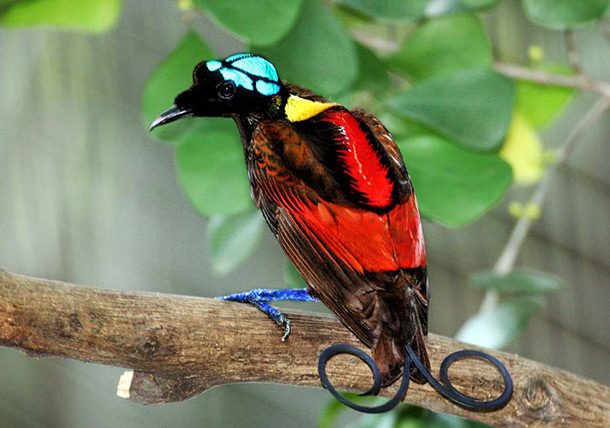 Source: http://www.bbc.com/earth/story/20150129-why-do-birds-of-paradise-dance
Source: http://www.bbc.com/earth/story/20150129-why-do-birds-of-paradise-dance These gorgeous birds of New Guinea are all unique in their own way with a wonderful array of colors on their feathers. What’s an even more amazing sight is the male mating dance. They’ll hop, shake, strut, and buzz all in an attempt to attract a mate.
Bedbugs
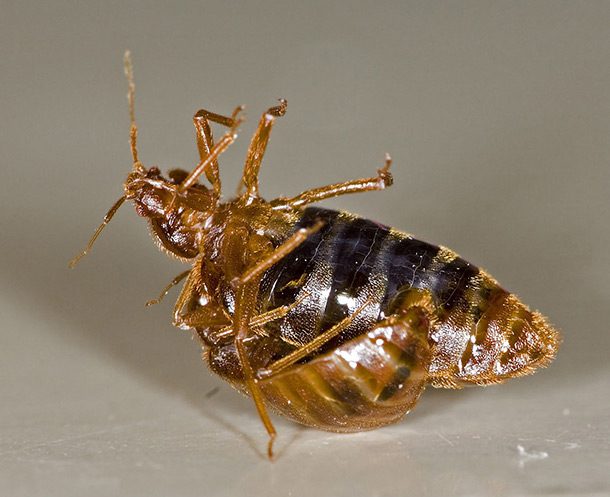 Source: https://www.mnn.com/earth-matters/animals/stories/scientists-discover-new-weapon-in-fight-against-bedbugs
Source: https://www.mnn.com/earth-matters/animals/stories/scientists-discover-new-weapon-in-fight-against-bedbugs These pesky creatures have a rather violent and disturbing way to reproduce. The male bedbug mates with the female through “traumatic insemination” by piercing the female with his hypodermic genitalia.
Hippos
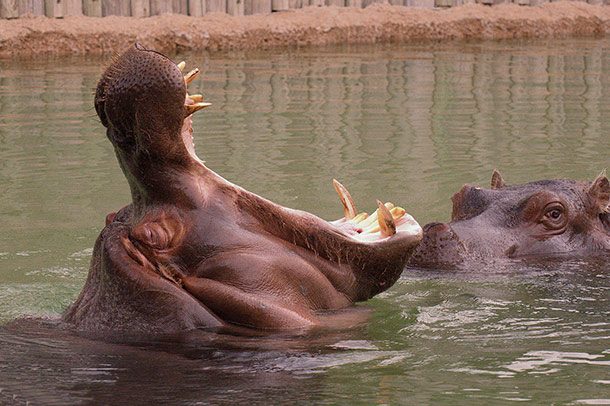 Source: http://www.cnn.com/2007/LIVING/11/16/animal.pickups/index.html
Source: http://www.cnn.com/2007/LIVING/11/16/animal.pickups/index.html These hungry and dangerous mammals of Africa have a rather dirty and smelly way of attracting a mate. First, they urinate and defecate on a spot before twirling their tail around to spread the smell. The mate is actually attracted by this display and will come over. Foreplay involves splashing around in the water before they get it on.
Bluegills
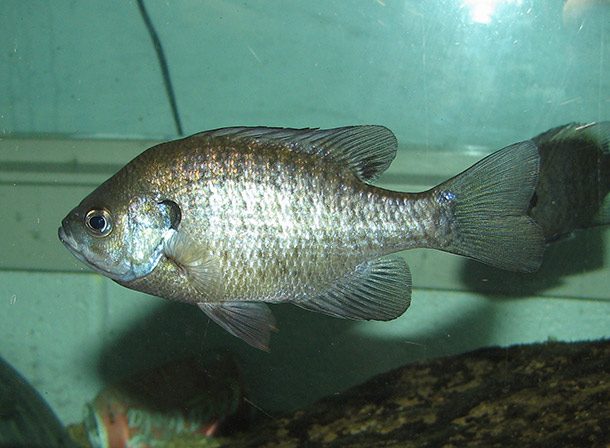 Source: http://www.pbs.org/wgbh/nova/camo/mati-nf.html
Source: http://www.pbs.org/wgbh/nova/camo/mati-nf.html These male fish have three ways to potentially mate with a female. The first is to become big and brawny, protecting their nest which lures females in to spawn. Another male may follow a female of similar shape and size into a rival male’s nest undetected to fertilize his own eggs. Then there’s the third male who swoops in while a rival male mates with a female and adds his sperm to the mix. The territorial male, however, has final say in the whole process because he can smell his eggs from another and will potentially eat the eggs that aren’t his.
Emperor Penguin
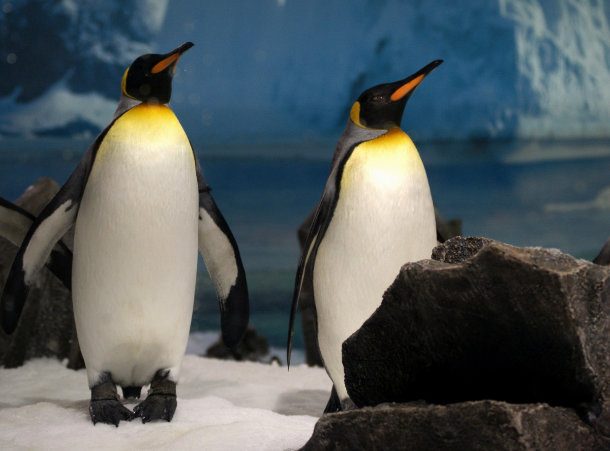 Source: http://www.biologicaldiversity.org/species/birds/penguins/emperor_penguin.html
Source: http://www.biologicaldiversity.org/species/birds/penguins/emperor_penguin.html These waddling birds of the Arctic start mating in March and April. They are serially monogamous, taking one mate a year. Once a female lays an egg, the male will lay on it to incubate while the female goes off to feed. Once the egg hatches, the male feeds the chick with a milky substance from its esophagus. When the female returns, the male goes to feed and eventually they both take care of the chick together.
Bowerbirds
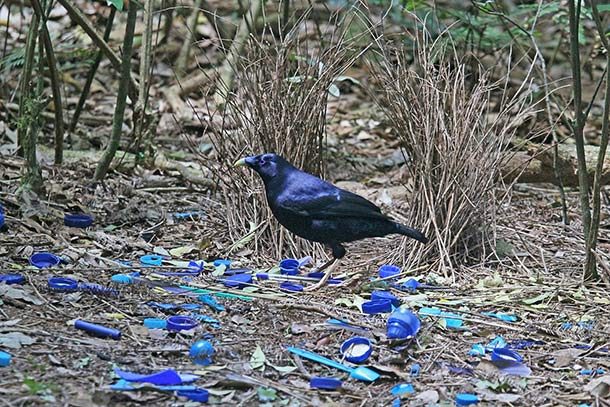 Source: http://www.bbc.com/earth/story/20141119-the-barmy-courtship-of-bowerbirds
Source: http://www.bbc.com/earth/story/20141119-the-barmy-courtship-of-bowerbirds These fanciful winged creatures of New Guinea and Australia go to great lengths to attract a mate. Every kind of Bowerbird, from a great bowerbird to a satin bowerbird, has their own colorful way of doing it. Usually, it involves an elaborate display of flowers, plastic toys, and dancing, all to impress a girl.
Earwigs
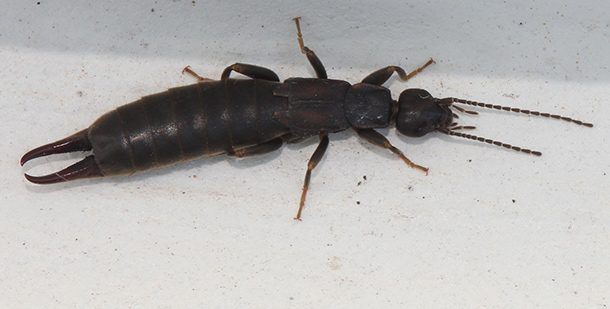 Source: http://www.psu.edu/dept/nkbiology/naturetrail/speciespages/earwig.html
Source: http://www.psu.edu/dept/nkbiology/naturetrail/speciespages/earwig.html These omnivorous creatures with giant pincers are mostly nocturnal with few social behaviors other than mating. To find a female, they can sense her pheromones she leaves behind in her feces. Males will fight over who gets to mate with the female, and usually the size of their body and pincers determines their success.
Sage Grouse
 Source: https://io9.gizmodo.com/this-is-the-mating-dance-of-the-greater-sage-grouse-an-1626214697
Source: https://io9.gizmodo.com/this-is-the-mating-dance-of-the-greater-sage-grouse-an-1626214697 In an act you almost have to see to believe, the Saga Grouse performs a mesmerizing dance to woo potential mates. They waggle, strut, and fluff their feathers at a certain site called the “lek” while females gather to watch it happen and see the goods.
Dolphin
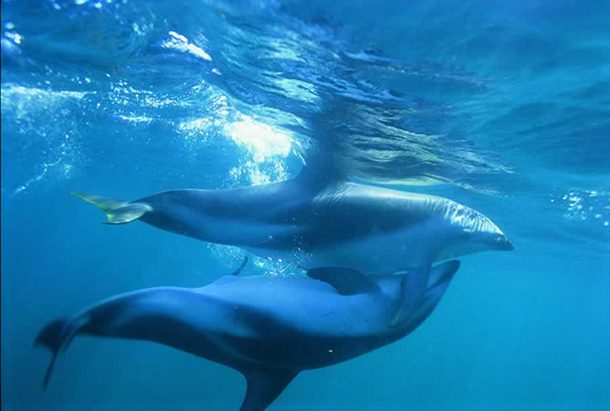 Source: https://study.com/academy/lesson/dolphin-mating-reproduction.html
Source: https://study.com/academy/lesson/dolphin-mating-reproduction.html Male dolphins do a variety of things to attract a female, some pleasant and others not so much. They’ll sing to a female, bring her gifts, or perform wild acrobatic feats to impress her. However, they also have been known to form gangs to capture a female from her pod and force her into mating. When they’re finished copulating, males will leave the female to raise the young on her own while they go off to find another mate.
Porcupines
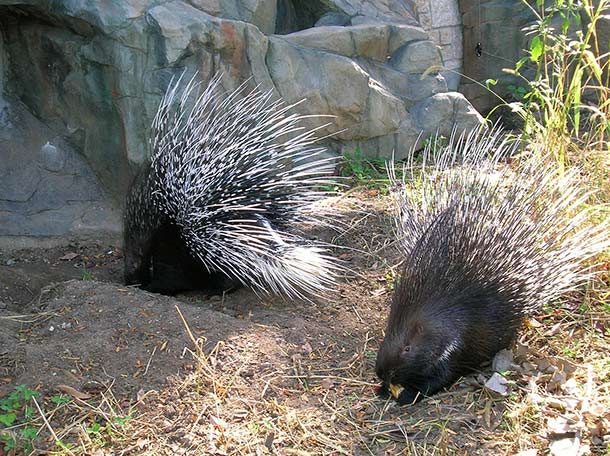 Source: https://www.livescience.com/47169-animal-sex-porcupines.html
Source: https://www.livescience.com/47169-animal-sex-porcupines.html With those long, sharp needles sticking out all over their body, you’d think porcupines wouldn’t stand a chance of reproducing, but they figure it out. Around September, the female porcupine will secrete mucus and urine to attract males, letting them know she’s ready to copulate. However, once the first male arrives, she won’t be ovulating yet. He has to wait, giving other males time to arrive. A vicious battle ensues between the males and the bloodied victor gets the spoils. When the female is ready, she curves her tail over her back to not impale the male. She’ll also lay the quills flat against her body, keeping him from danger.
Percula Clownfish
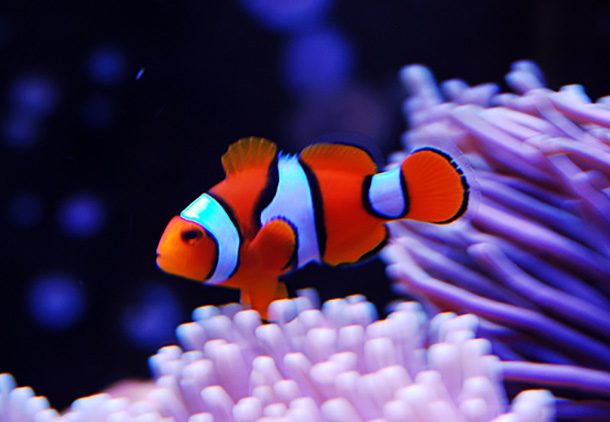 Source: https://www.dwazoo.com/animal/percula-clownfish/
Source: https://www.dwazoo.com/animal/percula-clownfish/ These little Nemos will spawn all year and will do dancing rituals such as head standing, touching ventral surfaces, and leaning towards each other with their dorsal surfaces touching. What makes them bizarre is that they always start out as males and will change to females when there aren’t any females around.
Whiptail Lizards
 Source: https://www.scientificamerican.com/article/asexual-lizards/
Source: https://www.scientificamerican.com/article/asexual-lizards/ These lizards are a rare breed. They technically don’t mate at all and are an all-female species. Obviously, they achieve this through asexual reproduction. So, their mating ritual is a party of one.
Hooded Seals
 Source: https://www.huffingtonpost.com/2012/09/27/male-hooded-seal-seek-females_n_1919827.html
Source: https://www.huffingtonpost.com/2012/09/27/male-hooded-seal-seek-females_n_1919827.html In an effort to show his manliness, male hooded seals will puff out a pink balloon-like membrane from its head. The pink balloon comes out of its nostrils and sits on top of its head. When two males fight over a female, the one with the larger pink balloon ends up scaring the other off.
Like reading about bizarre rituals? You must read 25 Incredibly Bizarre Rituals From Around the World.



























